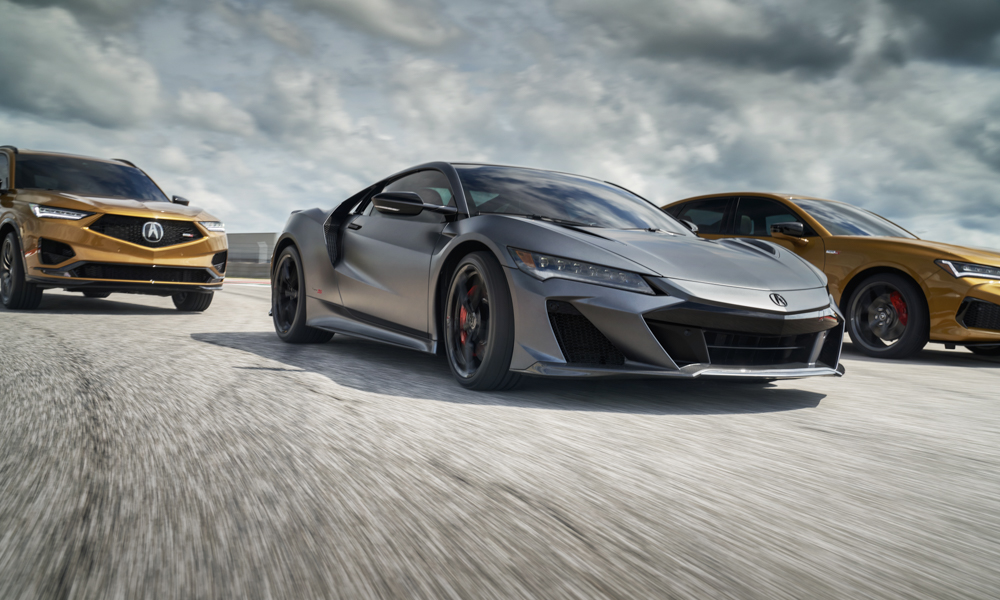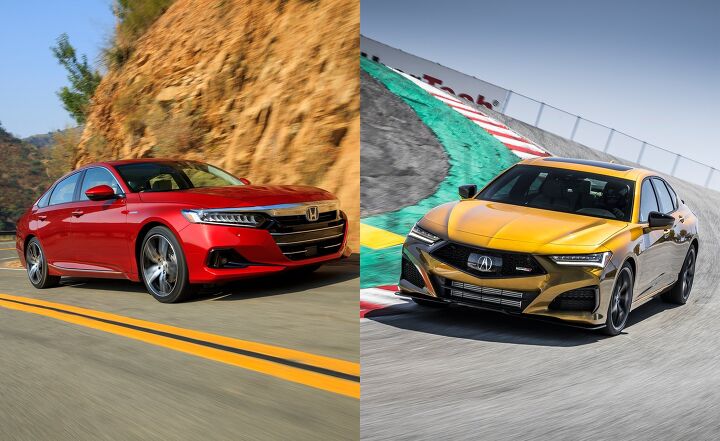Is Honda and Acura the Same? Top 10 Insights
Unravel the mystery - Discover if Honda and Acura are the same with our top 10 insightful comparisons in this short read!

Many wonder if Honda and Acura are the same, sparking interesting discussions among car enthusiasts. While they share a close connection, several key differences set them apart. This article delves into the top 10 insightful comparisons between Honda and Acura, aiming to clear up any confusion. From their origins to their target markets and design philosophies, we'll explore what makes each brand unique. Whether you're a dedicated fan or simply curious, these insights will shed light on the intriguing relationship between Honda and Acura.
Is Honda and Acura the Same? Exploring the Connection
At first glance, Honda and Acura might seem like two sides of the same coin. Originating from the same roots, these brands have carved their niches in the automotive world. Honda, known for its reliability and efficiency, caters to a broad market. On the other hand, Acura steps into the realm of luxury, offering premium features and innovative designs. The connection between the two is undeniable, but as we dive deeper, the distinct identity of each brand emerges.
List of Top Choices
- Origin Stories: The Foundation of Honda and Acura
- Market Focus: Target Audiences for Honda vs. Acura
- Design Philosophy: The Aesthetics of Honda and Acura
- Technology & Innovation: Driving Forward
- Performance Comparison: Engines Under the Hood
- Luxury Levels: Comfort and Class
- Price Points: Understanding the Value
- Brand Identity: The Image They Project
- Global Reach: Honda and Acura on the World Stage
- The Future: What Lies Ahead for Honda and Acura
Origin Stories: The Foundation of Honda and Acura

- Honda was founded in 1946 by Soichiro Honda and has its roots in motorcycles.
- Acura was introduced by Honda in 1986 as its luxury vehicle division.
- Both brands were established out of a desire to innovate in the automotive industry.
The journey of Honda began shortly after World War II, when Soichiro Honda set out to revolutionize the mobility sector. Originally focusing on motorcycles, Honda quickly became synonymous with engineering excellence and reliability. The birth of Acura in 1986 marked Honda's ambitious foray into the luxury car market, aiming to blend performance with luxury. Acura was a pioneer as the first luxury car brand from Japan, demonstrating Honda's commitment to breaking new ground. This difference in their origins encapsulates the divergent paths they've taken, with Honda prioritizing accessibility and Acura aspiring to compete with European luxury marques.
Market Focus: Target Audiences for Honda vs. Acura

- Honda targets a broad audience, focusing on reliability and affordability.
- Acura aims at the premium market segment, offering luxury and performance.
- Both brands cater to specific consumer needs, from everyday vehicles to high-end luxury cars.
Honda's appeal lies in its wide range of vehicles that promise durability, efficiency, and value for money, making it a go-to brand for families, first-time buyers, and those seeking practical transportation solutions. Acura, conversely, caters to a more niche market, attracting customers looking for an upscale driving experience without venturing into the price territory of European luxury automakers. By differentiating their market focus, Honda and Acura have successfully established distinct brand identities while addressing the diverse needs and preferences of the global car-buying public.
Design Philosophy: The Aesthetics of Honda and Acura

- Honda emphasizes functional and user-friendly design.
- Acura incorporates bold styling and innovation to stand out in the luxury market.
- Design philosophy is a reflection of each brand’s core values and target demographic.
Honda's design philosophy is rooted in simplicity, functionality, and the joy of use—values deeply ingrained in the brand’s DNA. This approach results in vehicles known for their clean lines and ergonomic interiors, designed to enhance the everyday driving experience. Acura, on the other hand, adopts a more daring design approach, often pioneering new design languages like the “Diamond Pentagon” grille. Its vehicles boast a more dynamic aesthetic, aimed at conveying luxury and performance. The contrast in their design philosophies highlights how Honda and Acura each appeal to different consumer tastes and lifestyles, yet both prioritize innovation and user experience at their core.
Technology & Innovation: Driving Forward

- Honda focuses on practical and accessible technological advancements.
- Acura invests in cutting-edge tech to enhance luxury and performance.
- Both brands are leaders in adopting and developing new automotive technologies.
Honda has continually introduced technology aimed at improving the practicality and safety of its vehicles, including developments in hybrid technology and the Honda Sensing suite of driver assistance technologies. These innovations underline Honda’s commitment to creating vehicles that are both environmentally friendly and safe for everyone. Comparatively, Acura leverages technology to push the boundaries of luxury and performance, investing in features like Super Handling All-Wheel Drive™ (SH-AWD®) and advanced infotainment systems. Through their respective focuses, Honda and Acura not only set industry benchmarks but also ensure that technological progress benefits a wide range of customers, affirming their leadership in automotive innovation.
Performance Comparison: Engines Under the Hood

- Honda offers a range of efficient and reliable powertrains.
- Acura provides high-performance engines and innovative drivetrains.
- Performance for Honda and Acura is tailored to meet the expectations of their distinct audiences.
Honda's engine lineup is designed with a focus on reliability, fuel efficiency, and meeting the everyday needs of drivers worldwide. From the peppy engines in the Civic to the more robust offerings in the CR-V, Honda ensures a perfect balance between performance and practicality. Acura, desiring to make an imprint in the luxury performance segment, equips its models with more powerful engines and pioneering technologies such as the SH-AWD®, enhancing driving dynamics and pleasure. This stark contrast in performance offerings underlines the distinct paths Honda and Acura take to satisfy their target markets, with each brand fine-tuning its vehicles to reflect the desired blend of efficiency, reliability, and luxury performance.
Luxury Levels: Comfort and Class

- Honda provides comfortable and practical interiors suited for daily use.
- Acura raises the bar with premium materials, advanced features, and meticulous craftsmanship.
- The difference in luxury levels caters to the distinct brand positioning and customer expectations.
Inside the cabin, Honda focuses on ergonomic design, high functionality, and durable materials, creating interiors that are comfortable for everyday commutes and long journeys alike. The brand excels in making practical, user-friendly spaces. Acura, however, aims to envelop drivers and passengers in opulence, using high-quality materials like leather and wood accents, along with state-of-the-art technology for entertainment and comfort. This commitment to luxury is evident in everything from the precise engineering of their quiet cabins to the sophisticated design elements, ensuring an exquisite driving experience that aligns with Acura’s upscale brand image.
Price Points: Understanding the Value

- Honda offers affordability with a wide range of pricing that appeals to various budgets.
- Acura commands higher price points, reflecting its premium offerings and luxury status.
- Each brand delivers value in alignment with its target audience’s expectations and needs.
Honda has established itself as a value leader in the automotive industry, offering vehicles that are accessible to a wide audience without compromising on quality or technology. The brand maintains competitive pricing across its lineup, from compact cars to SUVs, ensuring buyers get excellent value for their money. Acura, with its focus on the luxury segment, naturally occupies a higher price bracket. The brand justifies these costs with advanced technology, superior performance, and lavish interiors, catering to consumers looking for a premium driving experience. The pricing strategies of Honda and Acura reflect their market positioning and brand promises, delivering value that resonates with their respective audiences.
Brand Identity: The Image They Project

- Honda is perceived as reliable, practical, and accessible to the masses.
- Acura is viewed as sophisticated, innovative, and a symbol of status.
- Both brands have cultivated strong identities that appeal to their target demographics.
Honda’s brand identity is built on a foundation of reliability, affordability, and engineering excellence, appealing to a broad range of customers looking for dependable transportation. The company’s reputation for building long-lasting vehicles that are both efficient and affordable has earned it a loyal following. Acura's identity, in contrast, is centered around luxury, performance, and leading-edge technology, positioning it as a choice for discerning buyers who seek prestige and sophistication without venturing into the ultra-luxury segment. Both Honda and Acura have successfully established clear brand identities that resonate strongly with their intended markets, underpinning their commercial strategies and customer loyalty.
Global Reach: Honda and Acura on the World Stage

- Honda boasts a significant global presence, with diverse product lines catering to varied markets.
- Acura’s focus is more selective, targeting specific markets with its luxury offerings.
- The global strategies of Honda and Acura reflect their adaptability and market understanding.
Honda’s global footprint is vast, offering an array of vehicles that cater to the needs and preferences of consumers in virtually every corner of the globe. With manufacturing and sales operations worldwide, Honda has been able to meet diverse market demands, from compact city cars in Europe to rugged SUVs in North America. Acura, while having a strong presence in North America and parts of Asia, adopts a more focused approach, selectively targeting markets where there is a demand for its luxury vehicles. This strategy allows Acura to concentrate on delivering high-quality products and services that meet the expectations of luxury consumers in its key markets. The contrasting global approaches of Honda and Acura exemplify their adaptability and deep understanding of the automotive landscape, ensuring each brand’s continued growth and relevance on the world stage.
The Future: What Lies Ahead for Honda and Acura

- Honda continues to push toward electrification and sustainability in its future models.
- Acura is set to redefine luxury motoring with an emphasis on electric mobility and advanced technologies.
- Both brands are embracing the future with innovative strategies that promise to maintain their industry leadership.
As the automotive industry evolves, both Honda and Acura are positioning themselves at the forefront of these changes with a clear focus on the future. Honda's commitment to sustainability is evident in its pledge to electrify its lineup, introducing more hybrid and electric vehicles to meet the global demand for cleaner transportation options. Acura, too, is embracing this shift, with plans to infuse its luxury offerings with cutting-edge technologies and electrified powertrains, ensuring that its vehicles not only offer superior performance but also contribute to a more sustainable future. The forward-looking strategies of Honda and Acura underscore their dedication to innovation, environmental stewardship, and meeting the evolving needs of their customers, signaling a bright and exciting future ahead for both brands.
What's Your Reaction?





































































